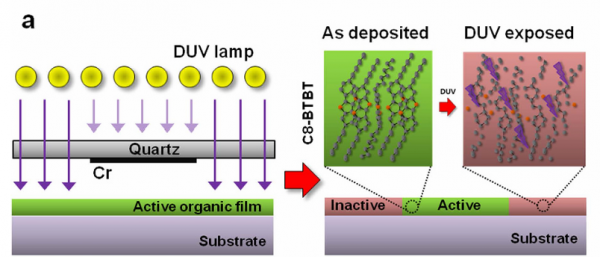Scalable Sub-micron Patterning of Organic Materials Toward High Density Soft Electronics
- 저자
- Jaekyun Kim*, Myung-Gil Kim*, Jaehyun Kim, Sangho Jo , Jingu Kang , Jeong-Wan Jo , Woobin Lee, Chahwan Hwang , Juhyuk Moon, LinYang, Yun-Hi Kim, Yong-Young Noh, JaeYun Jaung, Yong-Hoon Kim & Sung Kyu Park
- 저널명
- Scientific Reports
- 년도
- 2015
- Link
- http://dx.doi.org/10.1038/srep14520 487회 연결
[Abstract]
The success of silicon based high density integrated circuits ignited explosive expansion of microelectronics. Although the inorganic semiconductors have shown superior carrier mobilities for conventional high speed switching devices, the emergence of unconventional applications, such as flexible electronics, highly sensitive photosensors, large area sensor array, and tailored optoelectronics, brought intensive research on next generation electronic materials. The rationally designed multifunctional soft electronic materials, organic and carbon-based semiconductors, are demonstrated with low-cost solution process, exceptional mechanical stability, and on-demand optoelectronic properties. Unfortunately, the industrial implementation of the soft electronic materials has been hindered due to lack of scalable fine-patterning methods. In this report, we demonstrated facile general route for high throughput sub-micron patterning of soft materials, using spatially selective deep-ultraviolet irradiation. For organic and carbon-based materials, the highly energetic photons (e.g. deep-ultraviolet rays) enable direct photo-conversion from conducting/ semiconducting to insulating state through molecular dissociation and disordering with spatial resolution down to a sub-μm-scale. The successful demonstration of organic semiconductor circuitry promise our result proliferate industrial adoption of soft materials for next generation electronics.
